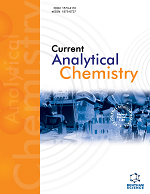
Full text loading...
We use cookies to track usage and preferences.I Understand

Detection and determination of ascorbic acid (AA) or vitamin C as a potent antioxidant substrate in commercial samples have an emerging significance. In relation to the colorimetry of ascorbic acid, the use of organometallic networks as enzyme peroxidase mimics has been reported many times, which is not cost-effective for commercialization. Therefore, this research, for the first time, examined the peroxidase behavior using garlic extract without additional extraction and purification steps. Peroxidase behavior was examined to measure ascorbic acid.
In this research work, firstly, allium sativum (AS) extract was prepared simply by crushing, stirring, and sonicating garlic bulbs in water. It exhibited peroxidase activity, which enabled the oxidation of 3, 30, 5, and 50-tetramethylbenzidine (TMB) in the presence of H2O2 to generate blue-colored oxidized TMB (ox-TMB) with a sharp absorption peak at 6526 nm. In continuation, the ox-TMB could be reduced by the addition of AA to the TMB+H2O2 system, leading to a decrease in absorbance and the fading of the blue color. Determination performance was accomplished after optimization of several factors, such as pH, time, TMB, and AS concentration.
The results showed that the decrease in absorbance (ΔA) after AA addition was in a good linear relationship with AA concentration in the range of 9.46-155.24 µM, with a low detection limit of 0.0223 µM. The feasibility of this approach was also assayed in commercial orange drinks and effervescent tablets of vitamin C with a 97.70%-110.17% recovery.
Finally, a sensitive and simple colorimetric sensor for the detection of AA using AS extract as a biocatalyst was developed.

Article metrics loading...

Full text loading...
References


Data & Media loading...